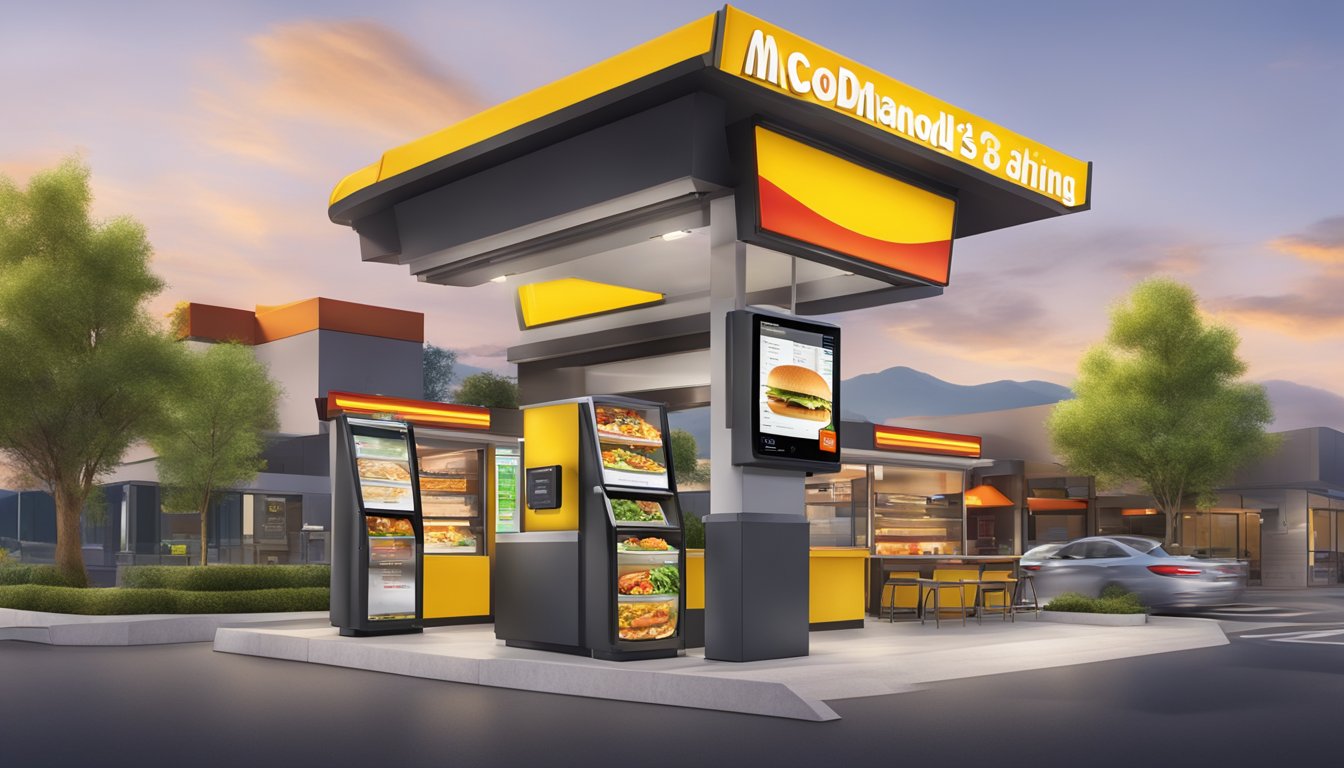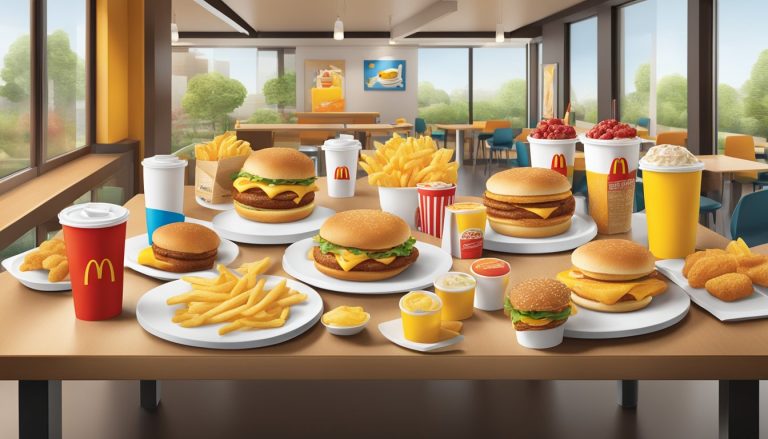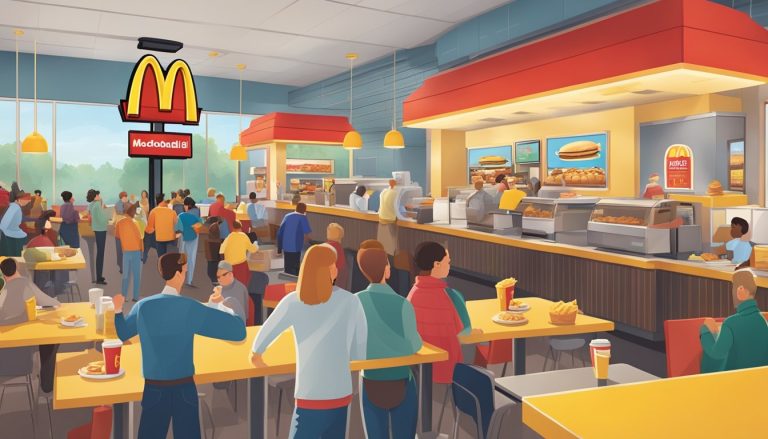McDonald’s revolutionized the fast food industry with its introduction of the breakfast menu in 1975. This move expanded the restaurant’s operating hours and offered customers a new range of morning meal options. The Egg McMuffin, hotcakes, and hash browns quickly became popular choices for those seeking a quick and convenient breakfast.
The implementation of drive-thru technology at McDonald’s locations in 1975 further transformed the fast food landscape, allowing customers to order and receive their meals without leaving their vehicles. This innovation significantly reduced wait times and increased the restaurant’s efficiency. The drive-thru concept aligned perfectly with the growing American desire for speed and convenience in their daily routines.
As McDonald’s breakfast offerings and drive-thru capabilities evolved, the company continued to adapt to changing consumer needs. The combination of a diverse breakfast menu and efficient drive-thru service has played a crucial role in McDonald’s maintaining its position as a leader in the fast food industry. This blend of menu innovation and technological advancement has shaped the way millions of people around the world start their day.
History of McDonald’s Breakfast
McDonald’s revolutionized the fast-food industry by introducing breakfast options. This move transformed morning eating habits and established iconic menu items that remain popular today.
Rise of the Fast-Food Breakfast
McDonald’s ventured into breakfast territory in the early 1970s. The company recognized a growing demand for quick morning meals. In 1971, they began testing breakfast items in select locations.
By 1975, McDonald’s launched its breakfast menu nationwide. The timing was perfect, coinciding with changing work schedules and busier lifestyles. Fast-food breakfast quickly gained popularity among commuters and families seeking convenient options.
McDonald’s breakfast success prompted other chains to follow suit. This sparked intense competition in the morning food market. By 1986, McDonald’s dominated, selling one in four breakfasts eaten outside the home.
Introduction of Iconic Breakfast Items
The Egg McMuffin debuted in 1972, created by franchise owner Herb Peterson. It became the cornerstone of McDonald’s breakfast menu. The sandwich combined eggs, Canadian bacon, and cheese on an English muffin.
Other beloved items soon followed. The company introduced hotcakes, sausage, and hash browns. These offerings expanded the menu’s appeal to diverse tastes. The Big Breakfast platter launched in 1977, featuring scrambled eggs, sausage, hash browns, and a biscuit.
McDonald’s breakfast items quickly became cultural icons. The portability of options like the Egg McMuffin revolutionized on-the-go eating. These products remain staples of the McDonald’s menu, beloved by millions worldwide.
Drive-Thru Service Evolution
Drive-thru technology revolutionized fast food service, offering customers unprecedented speed and convenience. McDonald’s played a pivotal role in popularizing and refining this innovative ordering system.
Origins of Drive-Thru Technology
The concept of drive-thru service emerged in the 1930s, with banks and some restaurants experimenting with the idea. However, it wasn’t until the post-World War II era that drive-thrus gained significant traction in the fast food industry.
McDonald’s was not the first to implement drive-thru service, but they quickly recognized its potential. The company opened its first drive-thru window in 1975 in Sierra Vista, Arizona, catering to soldiers from a nearby military base who weren’t allowed to leave their vehicles while in uniform.
This innovation aligned perfectly with America’s growing car culture and desire for quick, convenient meals.
Integration with McDonald’s Operations
McDonald’s rapidly expanded its drive-thru service across its restaurant network. The company invested heavily in streamlining the process, focusing on:
- Efficient kitchen layouts
- Clear menu displays
- Speaker systems for order-taking
- Strategic parking lot designs
These improvements reduced wait times and increased customer satisfaction. By the 1980s, drive-thrus became a standard feature in most McDonald’s locations.
The company continued to innovate, introducing:
- Digital menu boards
- Multiple order points
- Mobile ordering integration
Recent advancements include AI-powered voice recognition systems and personalized menu suggestions based on factors like weather and time of day.
These technological upgrades have further reduced wait times and improved order accuracy, cementing McDonald’s position as a leader in drive-thru service.
Digital Transformation at McDonald’s

McDonald’s has embraced digital technology to enhance customer experiences and streamline operations. The company’s digital initiatives span multiple touchpoints, from drive-thru innovations to mobile ordering capabilities.
Adoption of Digital Menu Boards
McDonald’s drive-thrus now feature dynamic digital menu boards. These screens display menu items, promotions, and pricing in vibrant, eye-catching formats. The digital boards allow for quick updates to reflect time-sensitive offers or menu changes.
Digital menus adapt based on factors like time of day, weather, and current restaurant traffic. This flexibility enables McDonald’s to showcase breakfast items during morning hours and switch to lunch offerings as the day progresses.
The technology also supports suggestive selling. When a customer orders specific items, the menu can highlight complementary products or promotional deals, potentially increasing average order values.
Optimizing with Dynamic Yield
In 2019, McDonald’s acquired Dynamic Yield, a decision logic technology company. This acquisition has allowed McDonald’s to personalize the drive-thru experience.
Dynamic Yield’s AI-powered system analyzes various data points to tailor menu displays. Factors considered include:
- Historical sales data
- Time of day
- Weather conditions
- Current restaurant traffic
The technology can suggest items based on a customer’s initial order, promoting add-ons or new menu items. This personalization has contributed to reducing drive-thru wait times by an average of 30 seconds.
Leveraging Mobile Applications
McDonald’s mobile app has become a key component of its digital strategy. The app offers features such as:
- Mobile ordering and payment
- Exclusive deals and promotions
- Loyalty program integration
Customers can place orders through the app and pick up their food via drive-thru, curbside, or in-store options. This flexibility reduces wait times and enhances convenience.
The app also provides valuable customer data, allowing McDonald’s to refine its offerings and marketing strategies. Personalized promotions delivered through the app help drive customer engagement and repeat visits.
Improving Customer Experience
McDonald’s has prioritized enhancing customer satisfaction through technological advancements and personalized services. The company focuses on streamlining operations, offering tailored interactions, and rewarding customer loyalty.
Enhancing Service Times and Accuracy
McDonald’s drive-thru technology has undergone significant improvements to reduce wait times and increase order accuracy. The company has implemented voice recognition systems and digital menu boards to streamline the ordering process. These innovations allow for faster order placement and reduced errors.
Advanced kitchen management systems help coordinate food preparation with incoming orders, ensuring meals are fresh and ready when customers arrive at the pickup window. McDonald’s has also introduced mobile ordering capabilities, enabling customers to place orders in advance and pick them up at their convenience.
Personalized Customer Interactions
McDonald’s leverages data analytics to provide customized experiences for its customers. Digital menu boards now display personalized recommendations based on factors like time of day, weather conditions, and popular items.
The company’s mobile app offers tailored promotions and deals, encouraging repeat visits and increased customer engagement. McDonald’s also utilizes geofencing technology to detect when mobile order customers are approaching, allowing staff to prepare orders just in time for arrival.
This level of personalization extends to the drive-thru experience, where AI-powered systems can recognize returning customers and offer their preferred menu items.
McDonald’s Loyalty Program and Rewards
The McDonald’s loyalty program has become a key component of its customer experience strategy. Members earn points on purchases, which can be redeemed for free menu items. The program provides valuable data on customer preferences and buying habits.
McDonald’s uses this information to create targeted marketing campaigns and develop new menu offerings. The loyalty program also encourages increased visit frequency and higher average order values.
Special promotions and exclusive rewards for loyalty members help foster a sense of appreciation and connection with the brand. Integration of the loyalty program with mobile ordering and payment systems further enhances convenience for customers.
Impact of COVID-19 on Fast-Food Services
The COVID-19 pandemic drastically altered the fast-food industry landscape. Restaurants quickly adapted to new safety protocols and changing consumer preferences.
Shifts in Consumer Behavior
Drive-thru usage surged as customers sought contactless options. Many fast-food chains reported significant increases in drive-thru traffic during the pandemic.
Mobile ordering and delivery services gained popularity. Apps like DoorDash and Uber Eats saw a spike in demand for fast-food delivery.
Customers showed a preference for familiar comfort foods. This trend benefited established chains like McDonald’s and KFC.
Adapting to New Safety Measures
Fast-food restaurants implemented enhanced cleaning procedures. This included more frequent sanitization of high-touch surfaces and increased hand washing protocols.
Contactless payment options became standard. Many chains encouraged the use of mobile payments and credit cards over cash transactions.
Restaurants modified their layouts to promote social distancing. Some removed seating areas or installed plexiglass barriers at counters.
Employee health screenings were introduced. Many chains required daily temperature checks and health questionnaires for staff members.
Strategic Growth Through Technology
McDonald’s leverages cutting-edge technology to drive growth and efficiency across its global operations. The company’s tech-focused strategy aims to enhance customer experiences and streamline restaurant processes.
Accelerating the Arches Growth Strategy
Accelerating the Arches forms the core of McDonald’s business strategy, with technology playing a pivotal role. The company has invested heavily in drive-thru innovations, reducing wait times by an average of 30 seconds through dynamic menu boards and personalization technology.
This investment proved crucial during the COVID-19 pandemic, allowing McDonald’s to serve over 300 million vehicles efficiently. The strategy also emphasizes digital ordering channels and delivery services to meet evolving consumer preferences.
McDonald’s has partnered with Accenture to implement edge technology and AI solutions in restaurants worldwide. These innovations aim to improve operations, customer satisfaction, and crew experiences.
Role of the Global Technology Department
The Global Technology Department, headquartered in the United States, spearheads McDonald’s technological advancements. This team develops and deploys solutions that support the Accelerating the Arches strategy across the company’s global network.
Key focus areas include:
- Drive-thru optimization
- Mobile ordering platforms
- In-store kiosk systems
- Data analytics for personalized marketing
The department works closely with the Global Chief Information Officer to align technology initiatives with overall business objectives. By fostering innovation, the Global Technology Department ensures McDonald’s remains at the forefront of the fast-food industry’s digital transformation.
McDonald’s and the Competitive Landscape

McDonald’s dominates the fast food industry through strategic menu innovations and operational efficiencies. The company faces fierce competition in key areas like breakfast and beverages while striving to maintain its market leadership.
The Coffee War with Starbucks
McDonald’s launched McCafé in 2009 to compete directly with Starbucks in the premium coffee market. This move expanded McDonald’s beverage offerings beyond soft drinks and shakes. McCafé provides espresso-based drinks and smoothies at lower prices than Starbucks.
The company invested in high-end espresso machines and barista training to improve coffee quality. McDonald’s leverages its extensive restaurant network to offer convenient coffee options. Drive-thru and mobile ordering give McDonald’s an edge in serving time-pressed customers.
McCafé has helped boost McDonald’s breakfast sales and increase overall store traffic. The coffee line generates higher profit margins compared to traditional menu items.
Menu Innovation and Core Offerings
McDonald’s core menu of burgers, fries, and chicken products remains central to its competitive strategy. The company continually refines these offerings to meet changing consumer tastes. In recent years, McDonald’s introduced fresh beef quarter-pounders and improved chicken recipes.
Menu innovation helps McDonald’s stay relevant in a crowded market. The company experiments with limited-time offers to generate buzz and drive sales. Examples include:
- Spicy Chicken McNuggets
- McRib seasonal promotions
- International menu items
McDonald’s also adapts its menu to local preferences in different countries. This flexibility allows the company to compete effectively in diverse markets worldwide. Despite menu changes, McDonald’s maintains focus on its core items that customers know and love.
Future of Quick Service Restaurants

Quick service restaurants are rapidly evolving with technology at the forefront. Digital innovations are reshaping customer experiences and operational efficiencies, paving the way for a more personalized and streamlined future in fast food.
Investing in AI and Data Analytics
Artificial intelligence and data analytics are revolutionizing quick service restaurants. AI-powered systems are enhancing order accuracy and speed in drive-thrus. These systems can interpret multiple languages and adapt to regional accents, improving customer satisfaction.
Big data analytics help restaurants optimize menu offerings and pricing strategies. By analyzing customer preferences and purchasing patterns, chains can tailor promotions and introduce new items with greater success.
Supply chain management is becoming more efficient through predictive analytics. Restaurants can forecast demand more accurately, reducing food waste and ensuring fresher ingredients are always available.
Exploring the Metaverse and IoT
The metaverse presents new opportunities for quick service restaurants to engage customers. Virtual reality experiences allow patrons to explore menu items or even place orders in immersive digital environments.
Internet of Things (IoT) devices are improving kitchen operations. Smart appliances can monitor cooking temperatures and food safety in real-time, ensuring consistent quality across locations.
Digital kiosks and mobile apps are becoming more sophisticated, offering personalized recommendations based on previous orders and dietary preferences. These technologies reduce wait times and increase order accuracy.
IoT sensors in dining areas can adjust lighting and temperature based on occupancy, enhancing customer comfort while optimizing energy use. This technology contributes to both improved guest experiences and operational efficiency.




